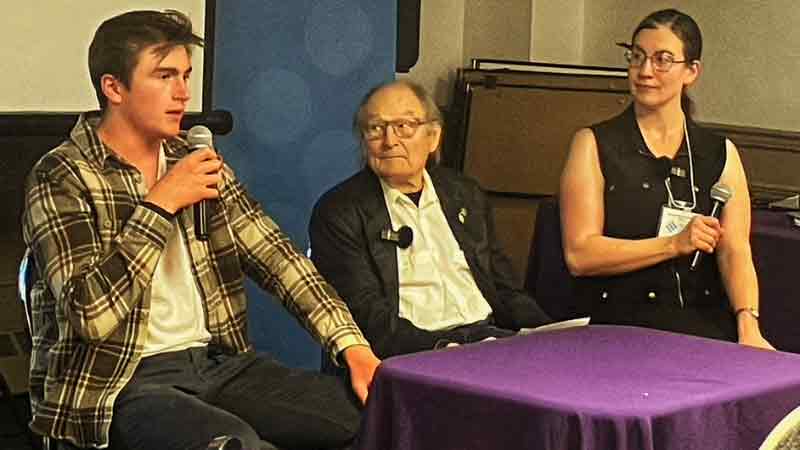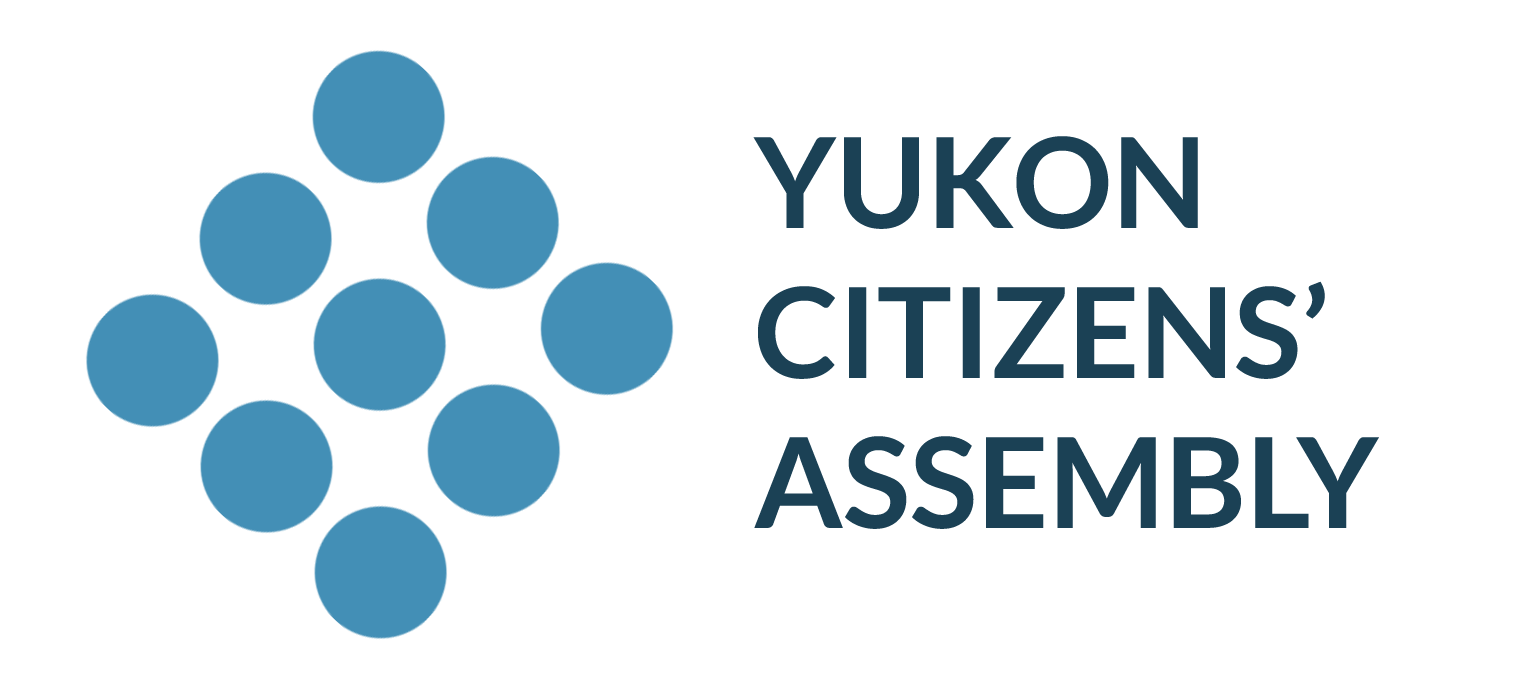Second Gathering
June 8 – 10
The Yukon Citizens’ Assembly members unanimously agreed that the following values should be embodied by an electoral system:
- Legitimacy
- Fairness
- Local representation and accountability
- Transparency
- Simplicity/accessibility
- Participation
Does Voting Even Matter? What Electoral Systems Might tell Us
Author, professor and head of the Political Science department at Queens’ University, Jonathan Rose Ph.D., and YCAER Chair Sara McPhee-Knowles Ph.D., chat about the Citizens’ Assembly process, speak to electoral system elements and different voting systems, and answer questions from the audience.
Electoral System Elements + Snack Vote
Professor Jonathan Rose begins by conducting a snack vote and introduces Citizens’ Assembly members through the three electoral systems elements:
- ballot structure
- district magnitude
- electoral formula
Electoral Systems: Single Member Plurality (First Past the Post)
Professor Jonathan Rose talks about the single member plurality system commonly called ‘first past the post.’
Key features:
- local representation – clear connection between MLA and voters
- categorical (one choice) ballot makes counting easy
- very easy to vote
- usually predictable results that produce stable governments
Note: Apologies for the sound quality in the first ten minutes – two zoom microphone channels were open at the same time, creating an echo. This is corrected at 9:30 mins.
Electoral Systems: List Proportional Representation (PR)
Professor Jonathan Rose talks about the List PR system and answers questions from members.
Key features:
- Goal is for vote share to equal seat share in legislative assembly
- Electoral districts are larger geographically because they are multi-member
- ie. the district magnitude is greater than one
- Usually a party-centered electoral system, but variations exist
- Usually, vote is for a political party, however open list systems allow voters to choose a candidate
Electoral Systems: Mixed Member Proportional (MMP) and Parallel
Professor Jonathan Rose talks about mixed systems and answers questions from members.
Key features:
- Local representation
- Combines plurality with proportionality
- All systems involve trade-offs. In this one, both may be compromised.
- Voters can choose a party and a candidate
- Unlike First Past the Post, these do not have to be same
- Allows voters to choose a local rep from one party but a different party to form government
Electoral Systems: Single Transferable Vote (STV)
Professor Jonathan Rose talks about the Single Transferable Vote system (STV) and answers questions from members.
Key features:
- Combines local representation with proportionality
- Allows for ordinal or preferential voting (ie. Ranked ballots)
- More than one representative per voting district/riding
- Candidate based not party based
-
- Unlike First Past the Post, these do not have to be same
-
- Allows voters to choose a local rep from one party but a different party to form government
Electoral Systems: Majority (Alternative Vote)
Professor Jonathan Rose talks about the majority system known as Alternative Vote (AV) and answers questions from members.
Key features:
- Combines local representation where MLAs must have a majority (over 50%) support in their district/riding
- Allows for ordinal or preferential voting (ie. ranked ballots)
- Ensures the winner in a district/riding has broad support (ie. a majority) so a higher threshold to win than with First Past the Post
Presentation – Fair Vote Canada (22 mins)
Anita Nickerson and Ryan Campbell of Fair Vote Canada present information and recommendations to the Assembly.
Panel Discussion – Fair Vote Yukon and Vote 16 (28 mins)

Dave Brekke from Fair Vote Yukon and Keegan Newnham Boyd from Vote 16 answer questions from YCAER chair Sara McPhee-Knowles and assembly members.
Questions:
- How did you first become involved in your organization and what was the catalyst?
- Why is this issue so important to you?
- Is there a conversation or something specific you’ve read that has proven particularly influential for you on this issue?
- What success have you seen on your issue?
